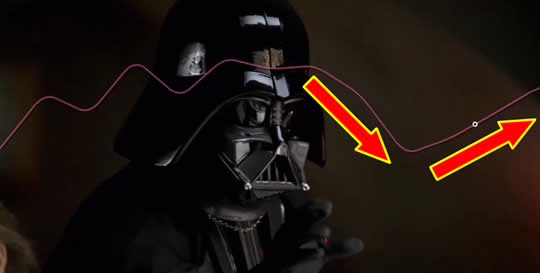Super Bowl Ads: “Second Payoff” Pays Off

The Super Bowl is the biggest day of the year for football fans, and just about as important for neuromarketing companies. The first results of neuromarketing studies from the big game are trickling out, and Innerscope Research observed a strategy employed by multiple advertisers: a “second payoff” at the end of the ad, after the branding visual.
You may recall Volkswagen’s ad from 2011, which featured a pint-sized Darth Vader apparently starting a VW Jetta with “the force.” That ad scored well in just about every measure of success – both ad critics and the public loved it, and neuromarketing study showed it to be the most engaging ad tested to that point. One criticism of the ad was that the brand and product appeared at the very end and weren’t particularly memorable. This led to the complaint so often heard about engaging ads – “Great ad, loved it! What was it for? I can’t remember.”
According to Carl Marci, CEO and Chief Scientist of Innerscope Research, several advertisers used a strategy exemplified by the 2012 VW Super Bowl ad, “The Bark Side.” The ad is shown in the video below, along with a graph of viewer engagement.
NOTE: At the moment, our friends at Volkswagen have blocked the playing of this video. Perhaps someone there will unblock it when they see that we aren’t attempting to post a duplicate of their ad. In the meantime, the still illustration shows the variation in engagement as calculated by Innerscope. You can view the full commercial without the engagement overlay in the second video box below.
Here’s the “play by play” from Marci:
Engagement builds relatively slowly to an initial high on completion of the dog’s journey with a drop when it switches to the branding moment. This is likely due to the fact that audiences engage with the dog but “miss” the connection with the brand/product in the first half of the ad. The addition of the Star Wars segment creates a more clear connection to the brand with the reference to the popular 2011 VW ad entitled “The Force.” Engagement surges with the second “pay-off” as a the audience completes the emotional journey on a high note.
Innerscope measures biometric measures, like heart rate, skin sweat, breathing and motion, to determine viewer engagement.
The other ads that Innerscope identified as using the “second payoff” approach were:
- Pepsi – Elton John/Flava Flav
- Audi – Vampires
- M&Ms
- Chevy – Graduation Gift
- Bud Light – HereWeGo
- Samsung – Tablet
- Acura – Seinfeld
What do you think – does a second payoff make the branding that precedes it more memorable? Or is it just as distracting as heading into another commercial?
